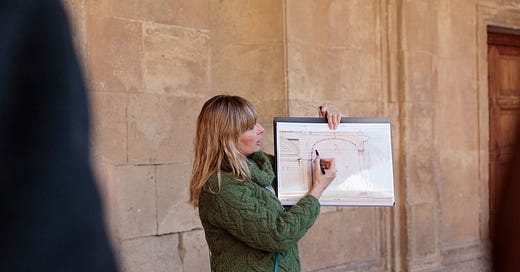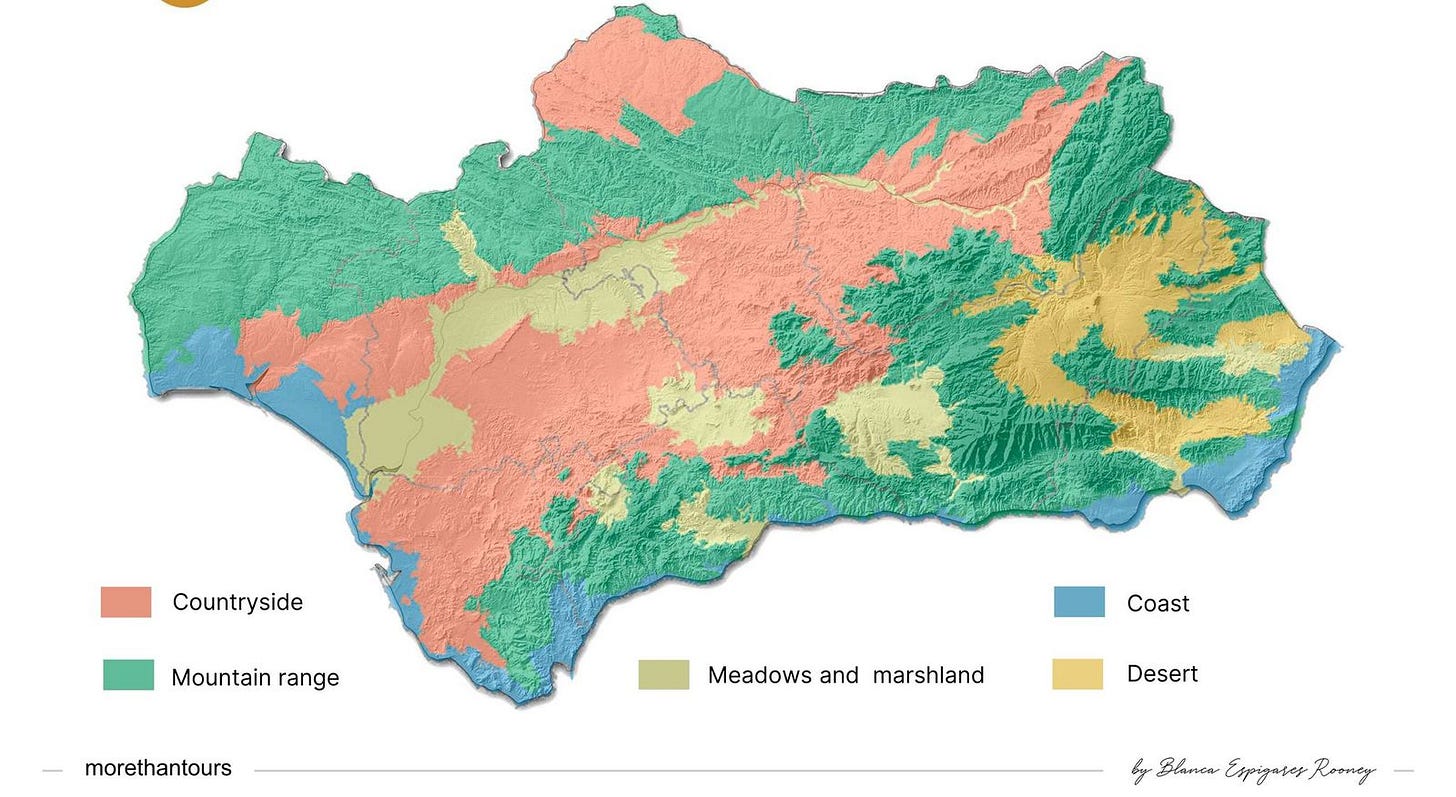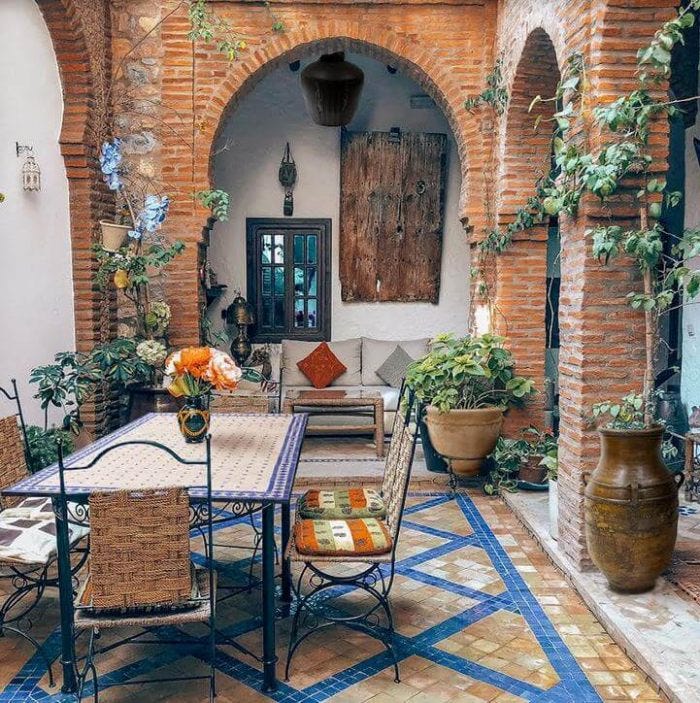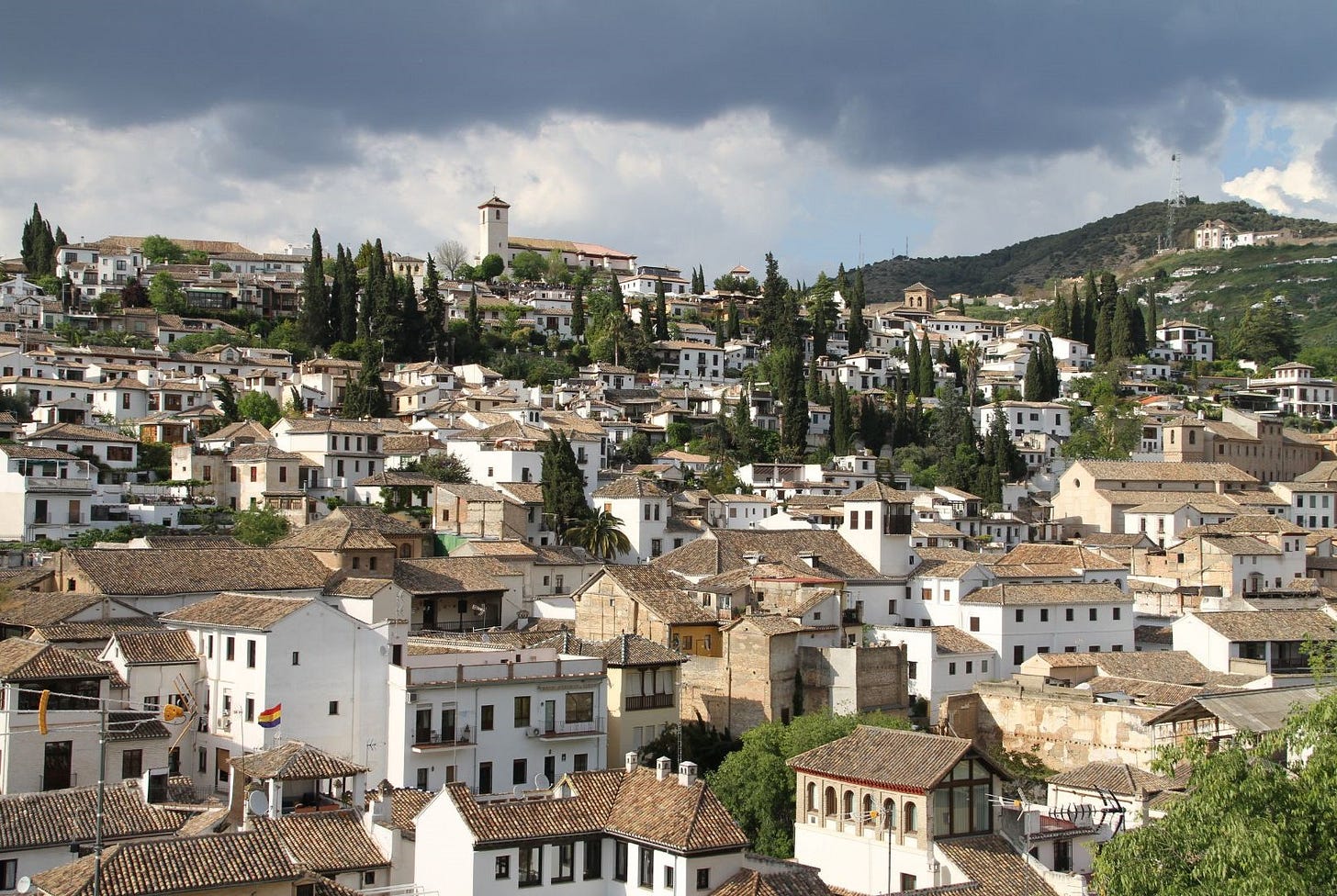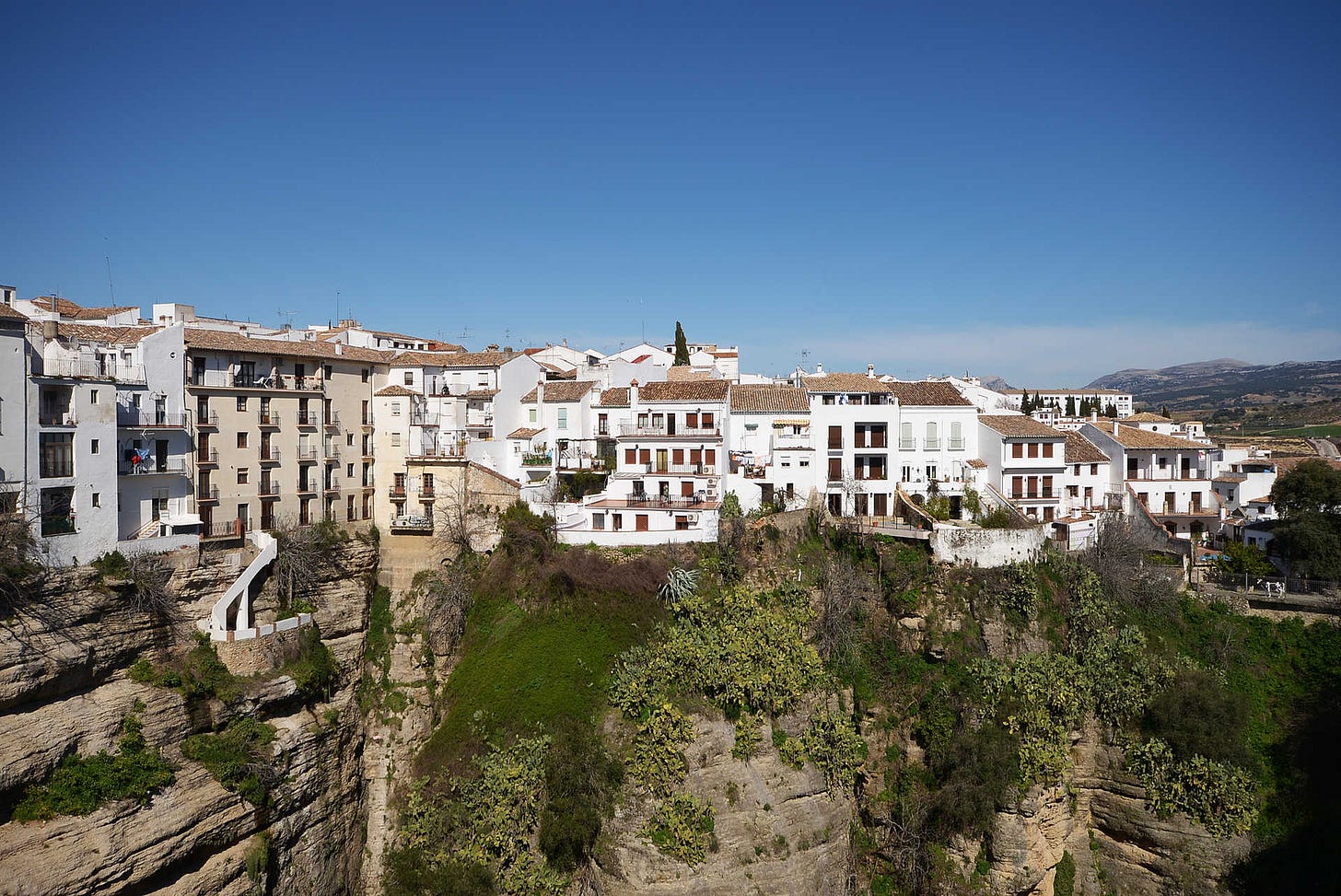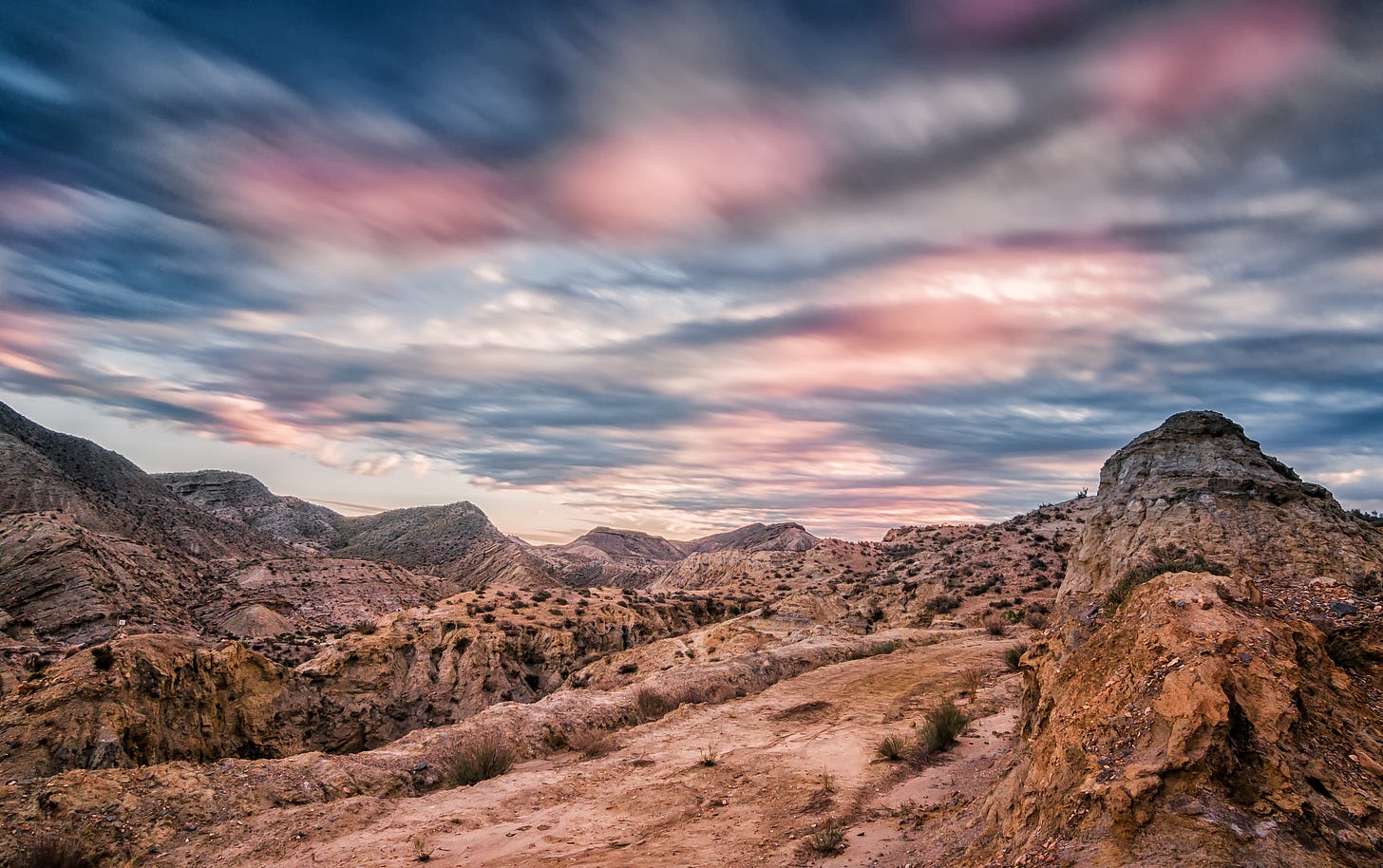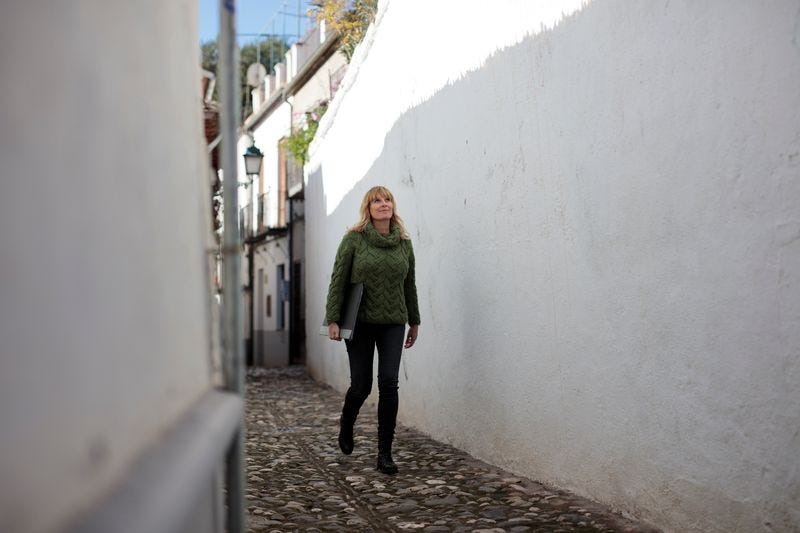A few days ago, I sent you an email introducing one of my most exciting projects to date: "an intimate journey through the soul of Andalusia," specially designed for curious travelers like you, whom I adore. If you'd like, you can download the dossier where I explain this journey in detail.
You know how much I love my homeland and how my goal, as a tour guide, is to show you the true essence of this wonderful region.
Today, I want to invite you to explore one of the most surprising aspects of Andalusia: its diverse landscapes and how these different environments not only shape its nature but also its architecture and history. And the best part: you’ll be able to enjoy all of these landscapes during the tour we’ll take together in March, if you’d like to join me.
Andalusia is a vast and diverse region, comparable in size to countries like Austria, but with unique landscape richness. In its expansive territories, you’ll find five essential landscapes that range from high mountains, like Sierra Nevada and the Betic Cordillera, to deserts, passing through forested mountain ranges, agricultural plains, and marshlands. These landscapes stretch across both Mediterranean and Atlantic coasts, creating a remarkable contrast in colors and light along its shores.
This variety of landscapes not only influences nature but also defines the architecture across the region. From the plains of the Guadalquivir Valley to the mountains of Ronda and Antequera, each area of Andalusia has developed its own way of building and living, adapting to the topography, climate, and cultural needs of its inhabitants.
Guadalquivir Valley: The Courtyard House and its History
In cities like Seville and Córdoba, located in the Guadalquivir Valley, the architecture of the patio house prevails. This typology dates back to Roman times when the city was built over ancient Iberian settlements. In these cities, you can still see the traces of the Roman cardo and decumanus, which organized the streets from north to south and from east to west, respectively.
To me, the patio house is a very special and poetic style because it captures a piece of sky and nature inside, creating a refuge in the heart of the home. It's like having a little piece of the atmosphere inside the house.
Mountain Ranges like Granada: Adapting to the Topography
As we move toward the mountain ranges, we find a type of settlement that, although also influenced by Roman architecture, adapts much more closely to the topography. In these areas, the rugged terrain demands that the houses mold to the slopes, taking advantage of the geography for construction. While patio houses can also be found here, the most characteristic feature is how the homes integrate into the terrain, with structures that adapt to the slopes.
The best example of this is Granada, as it is situated on five hills. Its first settlement was in the Albaicín neighborhood, which grew from the 11th century, taking advantage of terraces originally intended for farming. Here, the famous Carmen house emerged—a house that doesn’t have a patio but a terrace garden (now a garden), which provides shade and coolness, blending organically with the terrain. These houses are a perfect example of how oriental homes adapted to the terrain, where privacy is a fundamental and essential value.
The name Carmen has nothing to do with the Latin name or the Virgin of Carmen; it actually comes from the Arabic word KARM, meaning vineyard.
Other Mountain Ranges and Rural Architecture
The mountain ranges of Andalusia also show clear differences among them. The Serranía de Ronda or Grazalema, for example, is covered in cork oaks and pine forests, with extensive protected parks of pinsapos. In contrast, the Sierra de Aracena, with a cooler climate, is famous for its holm oaks and is one of the main areas for raising Iberian pigs. Here, houses are built from stone, always considering the climatic variations of the area.
High Mountains and Desert: Architecture of Contrasts
In high mountain areas like the Alpujarra, the architecture changes completely. Stone and slate constructions predominate, with roofs designed to withstand snow and storms in an extreme climate that alternates between warm summers and cold winters covered in snow and ice.
In contrast, the desert offers troglodyte dwellings and thick-walled earth houses, whitewashed to reflect the sun and protect against the scorching heat. The province of Granada is famous for having one of the largest concentrations of cave homes in the world, comparable to those of Cappadocia in Turkey.
It’s hard to imagine that such contrasts exist in southern Spain, but that’s part of its beauty.
Coastal Homes: From the Mediterranean to the Atlantic
Andalusia’s coasts also showcase remarkable diversity in their architecture. Coastal settlements were designed to shield against the sea, with fishing villages scattered along the shores. The houses on the Mediterranean coast contrast with those on the Atlantic coast in Cádiz and Huelva. Made from stone and lime, or earth and brick, these homes are built to withstand the harsh coastal environment. In the villages, enclosed balconies abound—sometimes true works of art—following a design tradition shared with oriental influences, such as those found in India.
As you can see, Andalusia is a mosaic of landscapes and cultures reflected in its architecture and the materials used to build it. From high peaks to deserts, fertile valleys, and bright coastlines, each corner of this region has adapted to its environment, developing a unique identity in its way of building and living.
Soils and food
Even the soil influences the cuisine and wine. Areas like Jerez, Sanlúcar, or El Puerto de Santa María are located in regions with a very particular type of soil—albariza—a prehistoric marine heritage that has consolidated into land, rich in mineral salts and even marine fossils. This land is so special that it gives rise to the famous Sherry wine triangle of Jerez.
This journey through the different architectural landscapes of Andalusia shows not only how the land influences buildings but also how people have learned to make the most of and respect their environment over the centuries.
Because Andalusia isn’t just one place but many, and diversity is its main characteristic. Every area is different, with different architectures and landscapes.
If this diversity has fascinated you as much as it has me, imagine how incredible it will be to experience it in person. I invite you to join this unique journey through the soul of Andalusia, where together we will explore each of these landscapes and discover the history that makes them so special. If you're interested in being part of this unforgettable experience, you can find all the details in the link below.
I can't wait to share this adventure with you!

